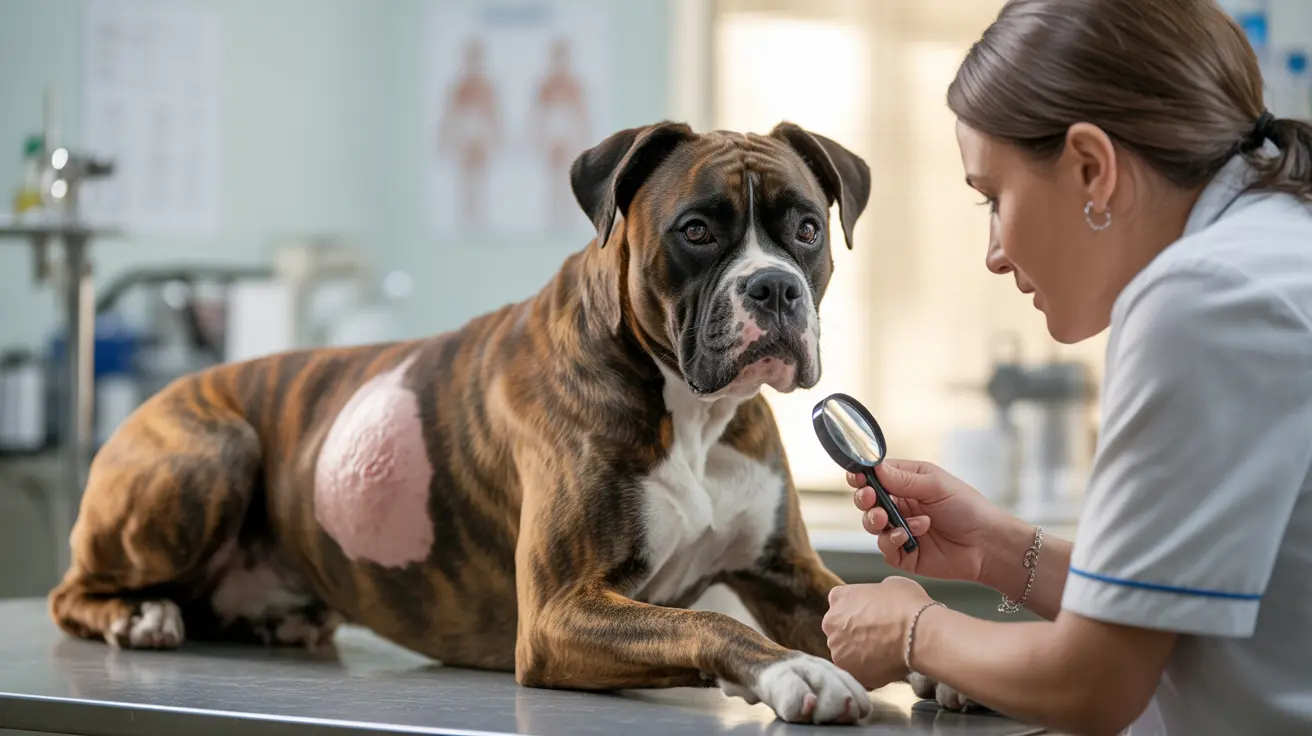When it comes to canine health concerns, dog skin cancer ranks among the most significant issues pet owners may face. With skin tumors accounting for over 34% of all canine cancers, understanding this condition is crucial for every dog owner. Early detection and proper treatment can make a substantial difference in your pet's prognosis and quality of life.
In this comprehensive guide, we'll explore everything you need to know about skin cancer in dogs, from identifying early warning signs to understanding treatment options and preventive measures. Whether you've noticed an unusual growth on your pet or want to stay informed for future reference, this article will provide valuable insights into managing this serious health condition.
Understanding Different Types of Canine Skin Cancer
Skin cancer in dogs manifests in several forms, each with distinct characteristics and treatment approaches. The most common types include:
Mast Cell Tumors
These represent the most frequent form of canine skin cancer, developing from immune system cells. They can appear anywhere on the body and vary significantly in appearance, making them particularly challenging to identify without professional diagnosis.
Melanomas
These aggressive tumors develop from pigmented cells and can spread rapidly to other organs. While they're less common than mast cell tumors, they're typically more dangerous due to their quick progression and high malignancy rate.
Squamous Cell Carcinoma
Often related to sun exposure, these tumors frequently appear on less-protected areas of your dog's body. They can be particularly aggressive in destroying local tissue and spreading to nearby lymph nodes.
Risk Factors and Prevention
Several factors can increase your dog's likelihood of developing skin cancer:
- Genetic predisposition (certain breeds like Boxers and Golden Retrievers)
- Extended sun exposure
- Light-colored or thin fur
- Age (older dogs are more susceptible)
- Previous skin trauma or chronic inflammation
Prevention strategies include limiting sun exposure during peak hours, applying pet-safe sunscreen to vulnerable areas, and regular skin checks during grooming sessions.
Diagnosis and Treatment Options
Early diagnosis significantly improves treatment outcomes. Veterinarians typically use a combination of diagnostic tools:
- Physical examination
- Fine needle aspiration
- Biopsy
- Advanced imaging (when necessary)
Treatment approaches vary based on the cancer type, stage, and location but may include:
- Surgical removal
- Radiation therapy
- Chemotherapy
- Targeted medications
- Combination therapy approaches
Monitoring and Long-term Care
Regular monitoring is essential for dogs diagnosed with skin cancer. This includes frequent check-ups, watching for new growths, and maintaining detailed records of any changes in existing tumors. Your veterinarian will establish a follow-up schedule based on your dog's specific situation.
Frequently Asked Questions
What are the most common signs and symptoms of skin cancer in dogs?
Look for unusual lumps or bumps, non-healing sores, changes in existing growths, unexplained bleeding or discharge, and changes in skin color or texture. Any rapid changes in size or appearance of skin lesions should be evaluated by a veterinarian.
Which dog breeds are most at risk for developing skin cancer?
Breeds with higher risk include Boxers, Boston Terriers, Bulldogs, Golden Retrievers, and Pugs. Light-colored breeds and those with thin coats are also more susceptible, particularly to sun-related skin cancers.
How can I tell if a lump on my dog is cancerous or just a benign skin tumor?
It's impossible to definitively determine if a growth is cancerous through visual inspection alone. Any new lumps should be evaluated by a veterinarian, who can perform necessary diagnostic tests to determine the nature of the growth.
What are the treatment options for skin cancer in dogs and are they effective?
Treatment options include surgery, radiation therapy, chemotherapy, and targeted medications. Effectiveness varies depending on the cancer type, stage at diagnosis, and chosen treatment approach. Many dogs respond well to treatment when cancer is caught early.
How can I prevent or reduce the risk of skin cancer in my dog?
Preventive measures include regular skin examinations, limiting sun exposure, using pet-safe sunscreen on vulnerable areas, maintaining good skin health, and scheduling regular veterinary check-ups. Early detection through routine monitoring is key to successful treatment.
Remember, while skin cancer in dogs can be serious, many cases are treatable when caught early. Regular monitoring and prompt veterinary attention for any suspicious skin changes are your best tools for protecting your pet's health.






